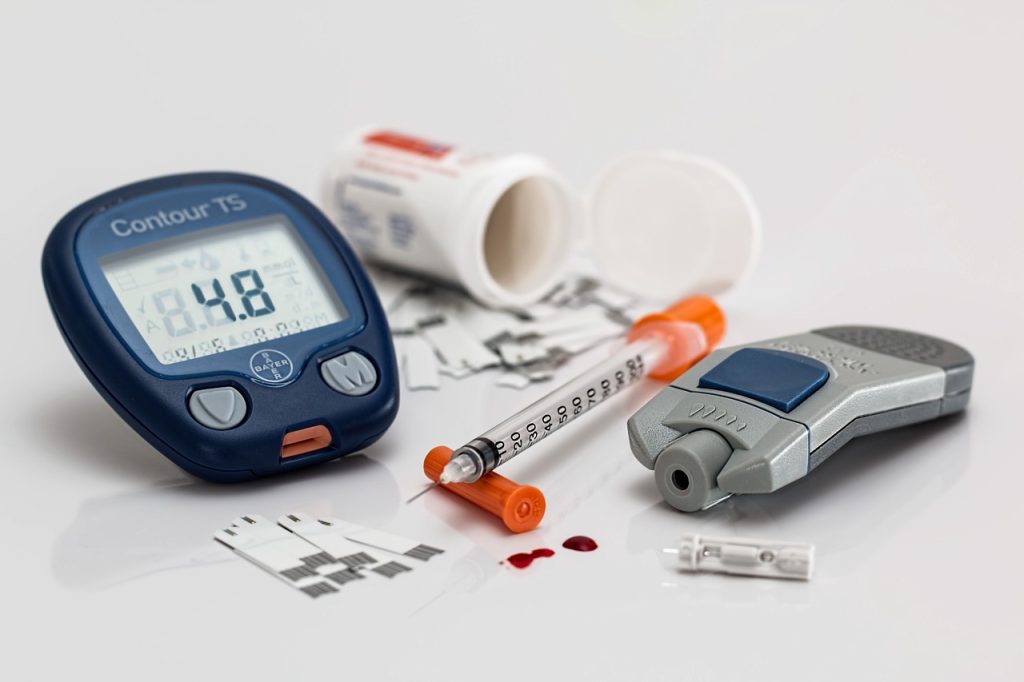EXPOSING DIABETES MELLITUS

Diabetes mellitus is a growing health problem worldwide. Currently, at least 537 million adults are living with diabetes. This number is expected to rise to 643 million by 2030. As many as 75% of the people living with diabetes live in low -and middle-income countries. In Africa, 1 in 2 people living with diabetes remain undiagnosed.
People with diabetes have high blood glucose levels. This happens when their bodies are unable to make enough insulin or do not respond very well to the insulin produced by their pancreas.
There are several types of diabetes, but they all manifest with high blood glucose. The common types of diabetes are Type 2 diabetes, Type 1 diabetes, and gestational diabetes.
What are the symptoms of diabetes mellitus?
The symptoms of diabetes include:
Frequent urination ( both day and nighttime)
Excessive thirst
Tiredness
Unexplained weight loss
Blurred vision
Numbness, tingling, or burning in feet and hands.
Frequent genital yeast infections(candidiasis)
Wounds that take too long to heal or fail to heal.
How is diabetes mellitus diagnosed?
Diabetes mellitus can be diagnosed by using simple blood tests recommended by your health care provider. These include:
Fasting blood glucose (FBS)- This is a blood glucose test done after an overnight fast (at least 8hrs)
Random blood glucose (RBS)- This is a blood glucose test done after you have eaten. To diagnose diabetes the patient must also have the common symptoms of diabetes.
Oral glucose tolerance Test (OGTT)- This is a special test where you are given a glucose solution after an overnight fast and your blood glucose is taken in the fasting state, at 1 and 2 hours after you have drank the glucose solution.
Glycated Haemoglobin (A1c, HbA1c))- This test can be done at any time and gives your average blood glucose level over the past 3 months.
What are the complications?
When diabetes is not well controlled it can damage several organs in the body including the kidneys, nerves, eyes, heart, brain, and blood vessels in the long term. Commonly people with diabetes suffer from complications affecting the heart and blood vessels. At least half of the people living with diabetes die from heart-related diseases. In the short term, people can present with conditions arising from very high blood glucose levels including hyperosmolar hyperglycaemic state (HHS), Diabetes ketoacidosis (DKA).
Long-term complications of diabetes include:
Chronic kidney disease
Blindness
Nerve damage
Diabetic foot ulcers and foot changes
Lower limb amputations
What are the risk factors for diabetes?
Age- People 45 years or older people are at a higher risk of developing type 2 diabetes.
Family History- Having 1st-degree family members with diabetes can increase your risk.
Prediabetes
Being Overweight/obese
Inactivity or lack of exercise
History of gestational diabetes
Ethnicity- Africans, African Americans, Native American Indians Hispanics, Pacific Islanders, Asians,
How can you prevent or delay diabetes?
Eat a healthy diet- More vegetables, reduced sugars, and refined foods, low carbohydrate diet, Mediterranean diet etc.
Exercise 30 minutes a day, at least 5x per week.
Work to maintain a healthy body weight.
Limit alcohol use
Quit smoking
Manage your stress levels
Maintain a normal blood pressure
1. American Diabetes Association. (2021). Diabetes Basics.
https://www.diabetes.org/diabetes
2. World Health Organization. (2021). Diabetes. https://www.who.int/news-room/factsheets/detail/diabetes
3. Cleveland Clinic. Diabetes mellitus. https://my.clevelandclinic.org/health/diseases/7104-diabetes
4. Center for Disease Control and Prevention. Diabetes risk factors https://www.cdc.gov/diabetes/basics/risk-factors.html

